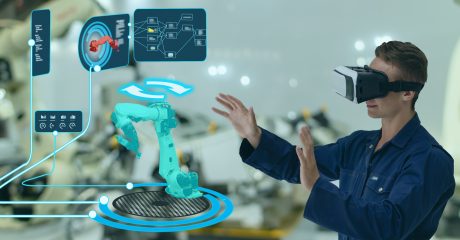With COVID-19 disrupting businesses worldwide, finding individuals with the talent and skills to work in the industry is becoming increasingly difficult. An additional challenge that has presented itself is figuring out how to train new and existing employees while following COVID-19 guidelines.
Filling Industry Jobs
In the past decade there has been a reported shortage of skilled laborers in the manufacturing industry. Jobs have become vacant due to many baby boomers retiring–until recently, experts predicted more than half of those positions would remain unfilled. They based this prediction off of the fact that fewer than ten percent of high school and college graduates enter the manufacturing field.
But with the rise of the COVID-19 pandemic things may be changing. The pandemic has highlighted the importance of manufacturing in the U.S. and has served as the biggest recruiting opportunity. In other words, manufacturing jobs may soon be filled by the masses of unemployed workers who were laid off during the pandemic. Not only does the average salary of $60,000 make these jobs so appealing, but the education requirements draw people to the industry as well. Most industry positions only require a two-year degree or technical level training.
What the Industry is Looking For
The industry struggles to find enough workers with the skills required for the job. This skill gap is partially due to a misperception of the manufacturing industry and what is required of applicants. What applicants need to bring to the table are “soft skills”–the ability to think critically, write concisely, and solve problems are great examples.
Soft skills are developed over one’s lifetime and can’t really be taught in a classroom or training environment. This means that in order to fill these jobs, manufacturers and educators have to come together and rethink their curricula and training as needed.
But how does one train employees during a pandemic?
Manufacturing Goes Virtual
Training new and existing staff with hands-on type training is now a thing of the past due to COVID. Since most training is done best when it’s hands-on, training providers are now finding creative ways to give people the same level of education. This means embracing virtual learning and using new technologies such as augmented and virtual reality. In some cases, providers are also creating hybrid programs. During these programs, employees do most of their training virtually and then they are allowed to come to a training facility to do hands-on practice.
Given the current crisis training isn’t the only thing going virtual. Businesses are now using Ai to monitor activities and manage a safer factory environment. Remote tools are also being used to monitor and diagnose equipment remotely. Because of this, industry experts are now available to assist with remote educational opportunities or they can acquire immersive remote assistance from vendors when needed.
Contact Us Today
Embracing online training and online tools is overdue. We’ve got to put technology to work in educating our workforce. At custom tool and grinding we always make sure our employees are learning and growing as the industry does. This ensures that our customers receive the quality services and products they need. Contact us to learn more about how we can help you.
